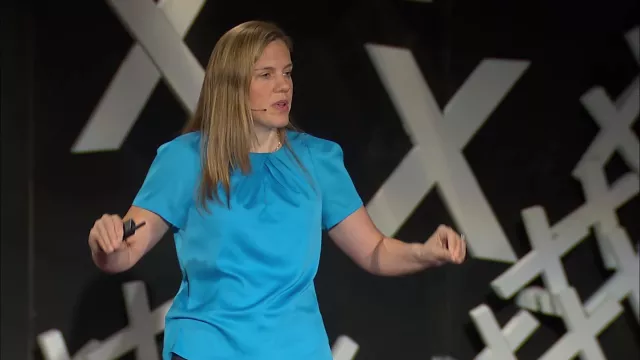Why posting to multiple channels drives virality of online videos

Back in the summer of 2012, South Korean pop star Psy released a music video on YouTube. Running at just under four minutes, “Gangnam Style” rapidly became a global sensation. Within just two months of its release, the video was attracting a daily average of nine million viewers. In late September, Guinness World Records confirmed it to be the “most liked” video on YouTube. By December it had become the first piece of content on the platform to garner more than one billion views. As of 2020, the Gangnam Style video has been seen by more than 3.7 billion people around the world.
Pys’s official YouTube channel has around 14.1 million followers—a significant user base. But even assuming that each one of these followers had watched the video several times and shared it with others, it still doesn’t account for the sheer volume of views the video has racked up over time.
So what’s going on? What is behind the super virality of Gangnam Style and other pieces of content that, like it, appear to defy the rules of probability on the social web?
Rajiv Garg, associate professor of information systems & operations management at Emory’s Goizueta Business School, has put a new hypothesis to the test. And he’s found that there’s a clear link between virality and what he calls the “spillover effect” of posting content onto multiple platforms at specific times.
“We know that when celebrities and popular figures post videos, there’s likely to be a strong response from their follower base, depending on the content. But over time, user consumption reaches a saturation point—the novelty simply wears off. And this happens around 10 days after a video is posted,” Garg said. “Yet some videos just keep on going, getting successive waves of views on the same platform in quantities that eclipse the follower base. We hypothesized that this is affected by launching on different sites and platforms, but we really wanted to understand the mechanisms behind this and figure out why this activity was occurring on the original platform as well as others—as in the Gangnam case.”
Together with Vijay Mahajan (McCombs, UT Austin) and Haris Krijestorac (HEC Paris), Garg looked at the diffusion patterns for viral content on the social web. First analysis confirmed that content sharing by users was the chief primary driver of virality; indeed, views typically increased after a video would appear on a second or third platform. But this didn’t explain why those views were growing back on the original platform too. In fact, the finding ran contrary to the established view that platforms compete for content—that posting to one platform leeches user views from another.
“The reasoning until now has been that social platforms cannibalize content. In other words, when you post Gangnam Style onto Vimeo, you’ll get fewer views on YouTube as a result,” Garg said. “Users will move to the other platform and watch it there instead.”
But in fact, the opposite was happening.
Intrigued, Garg and his coauthors deployed synthetic control—a comparative statistics methodology—to test the causal effects of sharing content to one platform versus posting it to multiple sites. This methodology involved posting 381 viral videos on 26 video-hosting sites. In addition, they ran a randomized field experiment with 30 videos that were randomly seeded onto new platforms at random times. The results across both methods were consistent. Users who were finding the videos once they had been posted to a second (or third, or fourth) platform were still sending viewers to the original platform to view the content. And viewers were coming in droves.
“What seems to be happening is that content is going viral as it’s consumed on the original platform—YouTube, say—and then shared to other channels. Here, on the second channel—Vimeo, Daily Motion or others—these videos reach new audiences,” explained Garg. “But for whatever reason, once they’ve discovered the video, many of these new users prefer to go to the original channel and watch it there. And this is happening consistently and in highly significant numbers of users.”
This spillover effect could be due to a number of things, says Garg. It could be that for certain audiences, content is simply more readily discoverable on certain platforms—but that these platforms are not the first choice in viewing preferences. It could also be that the content is visible to users but not viewable on the second platform.
“Say Gangnam Style is seen on YouTube by a viewer and shared. It then appears on Vimeo, and a second user discovers it; but maybe this user doesn’t like Vimeo or perhaps Vimeo isn’t available in their region or country. What happens then?” noted Garg. “The simple answer is that these new users end up Googling Gangnam Style and find it on YouTube—the original platform. The novelty and virality of the first wave of users has died down, but this new wave of users comes in, creating a spillover effect that boosts the popularity of the video all over again.”
Looking again at the results of their analyses, Garg and his colleagues were able to determine that the spillover effect is strongest immediately after a video is introduced onto a secondary platform, as well as at the 18- and 42-day marks.
“We analyzed the effect of introducing a video onto a new platform on the increase in views it generates on the original platform over time,” said Garg. “It appears the spillover mechanism is strongest during the first week but experiences spikes later on. In the long-run, we were able to generate twice as many views back on the original platform as we would otherwise have expected. So the effect really is huge.”
It is also limited, however. The researchers found diminishing impact in posting content to a succession of different platforms. By the time the video is shared to a fourth or fifth platform, Garg and his coauthors saw no returns.
The findings are nonetheless hugely significant for content creators, he says.
“We’ve seen that content shared on different platforms sends users back to the original, and that debunks the idea that online channels cannibalize each other’s content,” Garg noted. “And we’re able to say with precision that this effect is strongest during the first week with later spikes, suggesting these may be the best times to introduce content onto new platforms.”
Content creators looking to ‘viralize’ their material would do well to take a strategic, omni-channel approach based on these insights, says Garg. Multi-platform sharing is an effective way of spreading word of mouth content and reaching new audience bases—and not just nationally, he stresses.
“The effect is not limited to borders or languages. Savvy content creators can create their first ripple on a YouTube or Vimeo and, as the views start falling off, go on to propagate to a second or third channel, including foreign ones,” he said. “The spillover effect is just the same. Staging and staggering your content this way, you reach completely new audiences, many of whom will spill over onto your original platform.”
If you are a journalist looking to cover this topic – then let our experts help with your story. Rajiv Garg from Emory’s Goizueta Business School is available to speak with media – simply click on his icon now to arrange an interview today.

